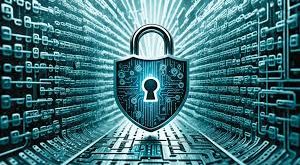Every year businesses are losing out data, money and business reputation, due to the ravaging impacts of cyberattacks. Cybersecurity Ventures estimated that since 2020, the cost of cybercrime has been rising by 15% annually and will reach $10.5 trillion USD annually by 2025.
It is needless to say that to have a cybersecurity strategy is a bare minimum necessity for any operating businesses today, and these strategies must cover securing the organization on multiple fronts
Traditionally, organizations have adopted the philosophy of covering the bases using multiple point solutions like Firewalls, EDR, IPS, DLP, Multifactor Authentication systems ETC. All these solutions had to be from multiple different OEMs since no single OEM has a security solution for every attack vector or not all of them are Gartner leaders, to combat this Siloed system, organizations adopted a SIEM [Security Information and Event Management] that would provide them with alerts which are aggregated and correlated.
The SIEM was the primary alert repository for SOC analysts, the challenges was in the operations aspect and the efficiency. The SIEM was a predefined system that initially didn’t permit users to alter the priority of a given alert owing to which organizations were unable to ensure their business critical problems were dealt with immediately. Another major challenge that organizations had was operational challenges since the immediate incident response was manual and that raised a dependency on the availability & efficiency of resources.
SOAR [Security Orchestration Automation & Response] emerged to prominence as a result of this overload of alerts and dependency on manual intervention. A SOAR system pulls alerts from SIEM and performs enrichment and response to contain the attack surface. The entire response is automated and the actions being performed can be customized with respect to the organizational preference. This ensures a set process and chain of command for Incident Response.
The Role of SIEM and SOAR in Cybersecurity
Cybersecurity is a multi-pronged approach and it is impossible for a single security solution to provide comprehensive protection. In order to achieve their cybersecurity goals more effectively and efficiently, businesses use a variety of technologies and strategies. SIEM is one such tool that can help security analysts working in a Security Operation Center (SOC) achieve threat detection, response, security incident reporting, and compliance by combining Security Information Management and Security Event Management capabilities in a single system. A SIEM also contains threat intelligence feeds, data aggregation, sophisticated analytics, forensics, dashboards, profiling, security warnings, and log interpretation. These features help to go a long way toward attaining cybersecurity goals.
Similar to SIEM, SOAR is a security solution that gathers and analyses massive amounts of cybersecurity data from numerous sources and uses it to automate and support human and machine-led cyber incident analysis, identification, and remediation as incident management. There is a shortage of IT security personnel in the market as threats and cybercriminals are evolving. By reducing the need for human intervention, SOAR helps businesses of all sizes increase their capacity to automatically identify and respond to cybersecurity threats. Besides this, SOAR responds automatically to countless alarms and employs both reactive and proactive strategies to successfully combat cyber threats.
Businesses Should Proactively Integrate SIEM and SOAR in Cybersecurity Plan
Integrating SIEM and SOAR results in a more robust, effective, and responsive security programme for any organization. Using SIEM, security teams may ingest massive amounts of data that have been standardized into well-organized records, issue alerts, and prioritize to create a triaged or structured view of the true positive risks that are most important to the SOC. The incident response process for each alert may then be managed using SOAR as a layer on top, automating and orchestrating the tedious and repetitive procedures that would normally take analysts many hours to accomplish.
The capabilities of SOAR and SIEM are noteworthy because they offer reassurance in SOC, save time and money, minimize the need for manual effort, pay more attention to automation, enhance incident response, and eliminate a lot of annoying warnings.
 Newspatrolling.com News cum Content Syndication Portal Online
Newspatrolling.com News cum Content Syndication Portal Online




